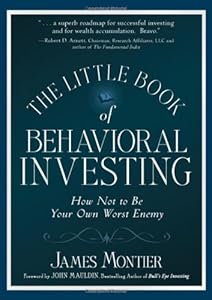We have been tracking different investment strategies through our Themes – a handy way to create, track and allocate capital to different investment strategies. As our frequent readers know, we do a “doodh ka doodh pani ka pani” theme whenever analysts come out with portfolio recommendations. Add to the mix our own value and quantitative strategies, and we have a fairly wide array of investment options for investors to choose from.
Here’s a roundup of how the different Themes performed, and the performance of ETFs over the same time-frame. Because at the end of the day, if the Nifty ETF out-performs the bheja-fry, why bother?
Three Months
From 2013-9-13 to 2013-12-13
| Quality to Price | +38.83% |
| Prabhudas Lilladher Midcap 10-Sept-2013 | +24.02% |
| CS Midcap 28-Aug-2013 | +17.48% |
| DB Rupee Depreciation 3-Sept-2013 | +16.18% |
| Balance-sheet Strength | +15.88% |
| Growth with Moat | +12.13% |
| Financial Strength Value | +11.60% |
| ADAG Mania | +8.86% |
| Prabhudas Lilladher Largecap 13-Sept-2013 | +6.85% |
| Momentum 200 | +3.62% |
| Efficient Growth | +3.20% |
| Market Elephants | +3.01% |
| Magic Formula Investing | +2.28% |
| Globe Monthly Monitor | +0.22% |
Should you have invested in ETFs, these are the returns over the same period.
| BANKBEES | +11.56% |
| JUNIORBEES | +10.57% |
| PSUBNKBEES | +10.08% |
| NIFTYBEES | +5.64% |
| INFRABEES | +2.82% |
| GOLDBEES | +1.71% |
Two Months
From 2013-10-15 to 2013-12-13
| Quality to Price | +32.57% |
| Prabhudas Lilladher Midcap 10-Sept-2013 | +11.44% |
| CS Midcap 28-Aug-2013 | +10.28% |
| Balance-sheet Strength | +10.12% |
| Growth with Moat | +6.74% |
| DB Rupee Depreciation 3-Sept-2013 | +6.36% |
| ADAG Mania | +5.01% |
| Financial Strength Value | +4.76% |
| Enterprise Yield | +3.15% |
| Betting on Bharat October-2013 | +3.04% |
| Magic Formula Investing | +3.01% |
| Prabhudas Lilladher Largecap 13-Sept-2013 | +1.74% |
| Globe Monthly Monitor | +0.05% |
| Momentum 200 | -0.91% |
| Efficient Growth | -1.58% |
| Market Elephants | -2.72% |
Should you have invested in ETFs, these are the returns over the same period.
| PSUBNKBEES | +15.93% |
| BANKBEES | +9.91% |
| JUNIORBEES | +4.38% |
| NIFTYBEES | +1.53% |
| GOLDBEES | +0.20% |
One month
From 2013-11-14 to 2013-12-13
| Quality to Price | +19.35% |
| Emkay’s Picks Nov-2013 | +6.83% |
| Ashwani Gujral’s Top 5 Picks – Nov 2013 | +6.41% |
| Microsec’s Diwali picks – 2013 | +4.99% |
| Kotak Securities’ Diwali picks – 2013 | +4.31% |
| Prabhudas Lilladher’ Diwali picks – 2013 | +4.09% |
| CS Midcap 28-Aug-2013 | +4.02% |
| Growth with Moat | +2.81% |
| Betting on Bharat October-2013 | +2.64% |
| Prabhudas Lilladher Midcap 10-Sept-2013 | +2.60% |
| DB Rupee Depreciation 3-Sept-2013 | +2.34% |
| Globe’s Diwali Picks – 2013 | +2.28% |
| ADAG Mania | +2.25% |
| Prabhudas Lilladher Largecap 13-Sept-2013 | +1.14% |
| Enterprise Yield | +1.02% |
| Balance-sheet Strength | +0.78% |
| Momentum 200 | +0.50% |
| Globe Monthly Monitor | +0.09% |
| Financial Strength Value | -0.38% |
| Market Fliers | -0.65% |
| Velocity | -0.74% |
| Market Elephants | -0.89% |
| Magic Formula Investing | -1.81% |
| Efficient Growth | -1.83% |
Should you have invested in ETFs, these are the returns over the same period.
| BANKBEES | +5.11% |
| PSUBNKBEES | +4.72% |
| NIFTYBEES | +2.01% |
| INFRABEES | +1.50% |
| JUNIORBEES | +0.61% |
| GOLDBEES | -2.82% |
Conclusions
Well, three months is a very small window to draw any meaningful conclusions but here are some observations:
- Quantitative Value had 2 in the top 5 performers over the last 3 and 2 months. It is as close to “Investing Without Emotions” that you will ever get.
- ETFs turned in some very meh returns.
- Banks and mid-caps have been out-performing.
- Gold lost its luster – but don’t tell that to Indian house-wives 🙂












